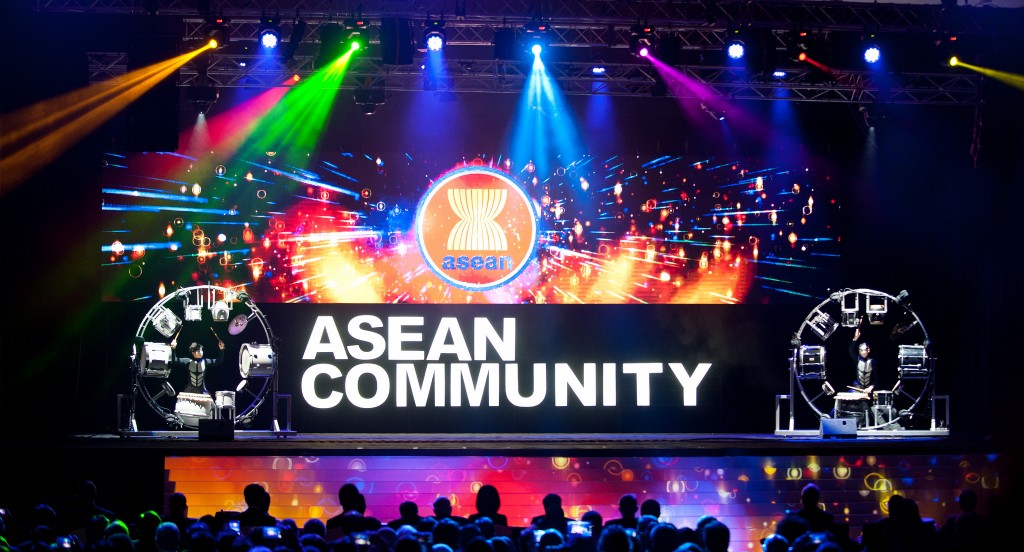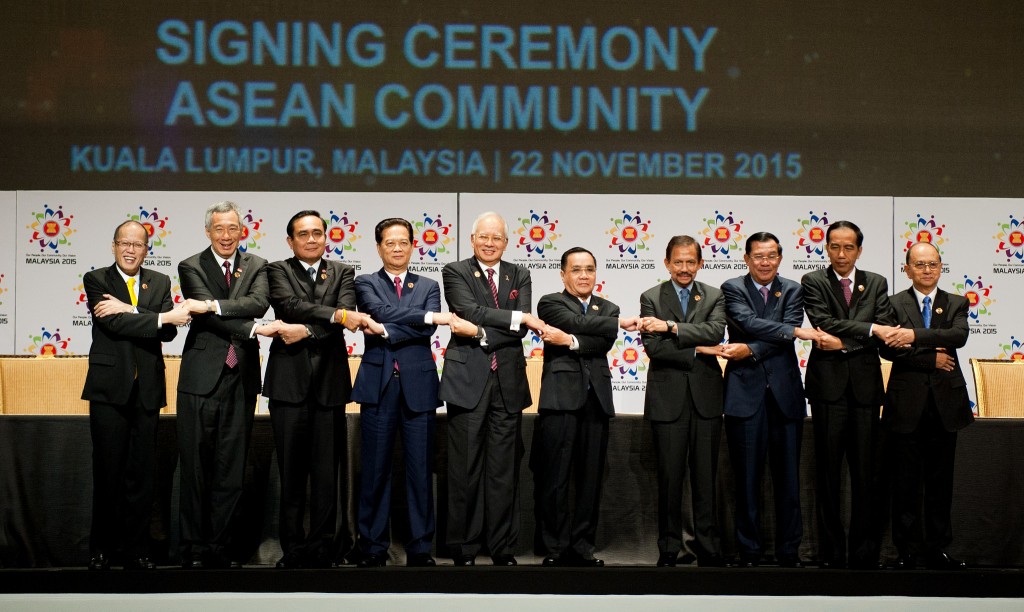ASEAN ushers in 2016 as a Community, bringing to fruition an integration process that creates new opportunities for its 622 million people to make use of the ASEAN Community’s outward-looking character, economic robustness and shared regional identity for Southeast Asia’s overall development.
The ASEAN Community was formally launched on 31 December 2015, marking ASEAN’s further consolidation since its creation in 1967. “It is a day we have all been waiting for. It is a day that we – ASEAN – can be proud of,” Prime Minister Najib Tun Abdul Razak of Malaysia, ASEAN Chair for 2015, said at the opening of the 27th ASEAN Summit and Related Summits on 21 November 2015.
“The realisation of the ASEAN Community has set a milestone in the integration process and will ensure lasting peace, security and resilience in an outward-looking region, with economies that are vibrant, competitive and highly integrated, and an inclusive community that is embedded with a strong sense of togetherness and common identity,” ASEAN Leaders said in their Declaration on the Establishment of the ASEAN Community issued at their 27th Summit in Kuala Lumpur, Malaysia on 22 November 2015.
At the same time, it is important that the process of community-building continues in the coming years. Thus, ASEAN Leaders have committed to continued regional integration over the next decade, by adopting the Kuala Lumpur Declaration on ‘ASEAN 2025: Forging Ahead Together’ that sets targets to meet by 2025.
The Community’s launch is the culmination of various initiatives of regional integration which have taken place over nearly five decades. It marks the completion by ASEAN Member States of the blueprints for the three Community pillars, after ASEAN Leaders in 2007 decided to move the goal of establishing the ASEAN Community to 2015 from the original target of 2020.
The ASEAN Community consists of three pillars – the Political-Security Community, Economic Community and Socio-cultural Community.
As an ASEAN political-security community, ASEAN forms a group of 10 sovereign Member States that have a common, shared stake in being internally resilient and promoting a rules-based, outward-looking region that enjoys lasting peace, security and stability. It follows the principles of the ASEAN Charter, uses consultation and consensus-building and adheres to the use of peaceful means in resolving disputes.
Despite the wide diversity of ASEAN Member States, Prime Minister Najib said they have managed to transcend these differences. “We have become a unique example of how 10 different nations can form a shared vision. Of how we are many, but we are one as ASEAN,” he added.
The ASEAN Economic Community is taking shape with the free movement of goods, services, capital and skilled labour, with a view to improving the lives of ASEAN citizens. It will be a single market and production base, a highly competitive economic region and equitable economic development and one fully integrated into the global economy.
These will boost both ASEAN’s intra-regional economy as well as its attractiveness to external economic partners as an investment destination and a consumer base of 622 million people. ASEAN has been a region of continued economic growth and its engines continue to hum even when growth slows in other parts of the world.
ASEAN countries have a combined GDP of US$2.6 trillion as of 2014, and a GDP growth rate of 4.6 percent.
Within ASEAN, the Member States’ implementation of measures to deepen economic integration – by simplifying rules, harmonising regulatory structures, easing the movement of goods across borders, reducing or eliminating non-tariff barriers – will further deepen intra-regional economic links.
Externally, ASEAN as a single market and production base is expected to draw more foreign direct investment, and thus help spur economic growth and create more job opportunities to help address poverty and economic inequalities.
ASEAN continues to attract robust levels of foreign direct investment, a major factor in its economic growth. Foreign direct investment inflows reached US$136.18 billion in 2014, up from US$95.84 billion in 2011.
The further reduction of barriers to intra-ASEAN trade over the next decade, in particular non-tariff barriers, will be a key contribution to deepening economic integration. Trade has traditionally been a major driver of economic growth in Southeast Asia, so maintaining healthy growth in trade, including through the reduction of trade barriers, is vital to the region’s economic health.
Intra-ASEAN trade makes at 24.1 percent of its total trade, while extra-ASEAN trade stands at 75.9 percent.
The ASEAN Socio-Cultural Community’s goal is to contribute to realising “a people-centred and socially responsible ASEAN Community by forging a common identity and building a caring and sharing society.” This pillar focuses on bringing out the human dimension of ASEAN cooperation in areas such as health, education, environment and disaster management, and an abiding commitment to address the region’s aspiration to lift the quality of life for its people.
Students pose for photographs at the kindergarten of the Kiettisack International School in Vientiane, Lao PDR, on June 19, 2015.
At their November summit, ASEAN Leaders stressed that community-building must make a difference in the lives of citizens who are the beneficiaries of a people-oriented, people-centred ASEAN. This part of community-building will be the focus of ongoing initiatives such as programs to narrow the development gap within and among Member States, and to widen and deepen connectivity linkages in the region.
As the ASEAN Leaders said in their Declaration on the Establishment of ASEAN Community, ASEAN aspires to establish a Community “where our peoples continue to participate in and benefit fully from the ongoing process of ASEAN integration and community building.”
*Sources: ASEAN.org statistics, speeches and documents at the 27th ASEAN Summit, speech V Hirubalan, ASEAN briefers given by the Secretariat.
ADVT.



